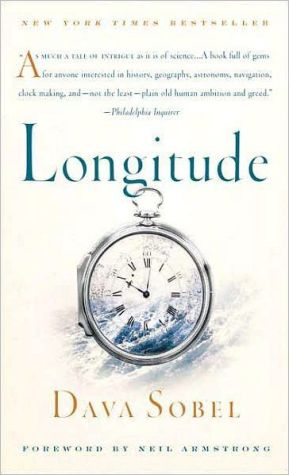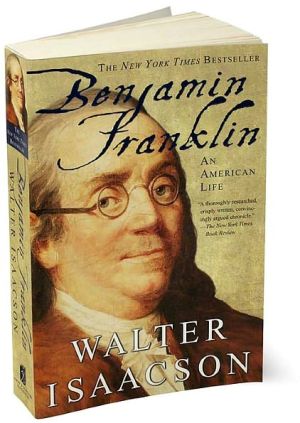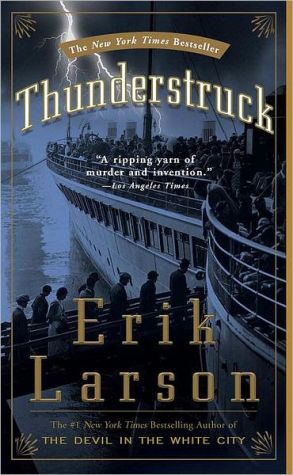The Telephone Gambit: Chasing Alexander Graham Bell's Secret
"A stellar example of historical investigation at its probing best."—Chuck Leddy, Boston Globe\ Throughout his career, Alexander Graham Bell, one of the world's most famous inventors, was plagued by a secret: he stole the key idea behind the invention of the telephone. While researching at MIT, science journalist Seth Shulman scrutinized Bell's journals and within them found the smoking gun: a hint of deeply buried historical deception. Delving further into Bell's life, Shulman unearthed the...
Search in google:
"A stellar example of historical investigation at its probing best."—Chuck Leddy, Boston Globe The Barnes & Noble Review It'll be stacked in the science shelves, but The Telephone Gambit might be an early contender for best thriller of the year. Seth Shulman's unlikely whodunit poses a question most of us think we already know the answer to: Who invented the telephone? The patent for the telephone is said to be the most lucrative ever awarded. In addition to wealth, it guaranteed immortality to the man to whom it was issued, Alexander Graham Bell, a historical icon whose first successful transmission of speech over a wire -- "Mr. Watson, come here. I want to see you" -- is the stuff of legend, familiar to schoolchildren across the land.
\ From Barnes & NobleBarnes & Noble Discover Great New Writers\ "Mr. Watson, come here!" These words, spoken by Bell to his assistant, are among the most celebrated in scientific lore because, as the story goes, they signaled the birth of the telephone, a device that would forever change the world. But the words are also a clue to a dark and convoluted tale, as Shulman discovered while researching Bell's invention at MIT. U.S. Patent #174465 is the most valuable ever issued; unfortunately, it was likely issued to the wrong man. Documents only recently made public provide irrefutable evidence that corruption and chicanery secured the honor for Bell rather than for electrician Elisha Gray, who filed competing patent paperwork the very same day. That Gray and Bell had rival claims is nothing new. What Shulman found, however, is the smoking gun -- or rather a gallery of many small smoking guns -- proving that Gray, not Bell, developed the components needed to transmit the voice, and that Bell stole the key information, passing it off as his own.\ \ By all accounts, Bell was an honest man who preferred to work with the deaf rather than chase the fabulous wealth new inventions could bring. Why then, would he dishonor himself by not only pirating the work of another inventor but participating in a long, demoralizing campaign to keep the secret? The key to unlocking the mystery lies in his call to Watson on that fateful day. (Spring 2008 Selection)\ \ \ \ \ Entertainment WeeklySeth Shulman's The Telephone Gambit masterfully breathes life into a long-forgotten controversy.\ \ \ The Washington PostMasterful...[the] story never flags....an intrepid journalist-turned-historian's quest for the true story of the invention of the telephone.\ \ \ \ \ Booklist“Starred Review. Rewrites history even as it immediately lures readers with scandal and iconoclasm.”\ \ \ \ \ New Scientist“A great tale of historic detection.”\ \ \ \ \ Wall Street JournalA page-turner....The Telephone Gambit is solid history, and Seth Shulman makes it as much fun to read as an Agatha Christie whodunit by using the techniques of historiography the way Hercule Poirot used his 'little gray cells.' That's no small accomplishment.— John Steele Gordon\ \ \ \ \ Christian Science MonitorA portrait of the thrilling era of innovation in which Bell lived....Succeeds splendidly as an edge-of-your seat historical tale.— Marjorie Kehe\ \ \ \ \ Henry PetroskiIn barely 200 pages of text, Shulman has presented a highly complicated web of tales clearly, succinctly, sympathetically and almost seamlessly. He has done such a masterful job that we're not even sorry to see the book, pleasurable though it is, come to an end. He has let his wholly integrated tales and his writing style dictate its pace and length. Its story never flags, nor does it leave any significant business unfinished.\ —The Washington Post\ \ \ \ \ Publishers WeeklyAbsolutely by accident, I fell through a kind of historical trap door into a vexing intrigue" surrounding the invention of the telephone, writes science journalist Shulman (Undermining Science: Suppression and Distortion in the Bush Administration). The result is a dramatic probe into a shocking intellectual theft. In 2004, studying Alexander Graham Bell's laboratory notebook, he found a 12-day gap followed by a March 7, 1876, note, "Returned from Washington," and a striking shift in Bell's ideas that resulted in his famous "telephone" call to Mr. Watson on March 10. The suspenseful details of "Bell's life-altering visit" emerge as Shulman learns that electrical researcher Elisha Gray had filed a claim on a device to send "vocal sounds telegraphically" on the same day Bell filed his patent application, February 14, nearly a month before Bell's notebook recorded his success. Bell, Shulman realized, had "drawn an almost perfect replica of his competitor's invention in his own notebook." The reader follows Shulman as he contacts curators, explores archives and unravels the mystery, leading to a remarkable re-creation of the 1876 Centennial Exposition, where a nervous Bell attempted to avoid demonstrating his telephone because he knew Elisha Gray would be present. Although much of this book involves comparisons of correspondence, documents and journals, the skillful, polished writing makes century-old events spring to life. 20 illus. (Jan. 7)\ Copyright 2007 Reed Business Information\ \ \ \ \ Library JournalShulman (Unlocking the Sky; Owning the Future) brings a journalist's storytelling skills and a historian's persistence to this account of his year at MIT's Dibner Institute spent researching the life of Alexander Graham Bell, inventor of the telephone. Or did Bell really invent the telephone? Here is where the suspense lies in this account of how "invention occurs and is remembered." Shulman meticulously studied long-forgotten patent litigation transcripts and reread Bell's laboratory notebooks, which had been almost entirely unavailable to scholars until recently. He painstakingly sifted the facts surrounding Bell's work, exploring the politics and influence underlying how Bell obtained a patent for the technology we know as the telephone. Shulman builds a strong circumstantial case for Bell and his colleagues copying another inventor's innovation and exploiting it to complete Bell's own work. With humor and intelligence, the author helps us understand how myth overtakes historical events. This title is ideal for history undergraduates learning scholarly methods; general readers will enjoy it for its engrossing descriptions of historical detective work. Recommended for all libraries.








